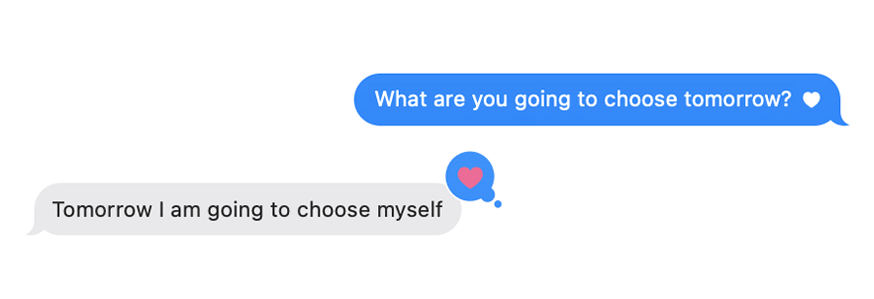🕑 4 minute read
Conversation → Clarity is a series of coaching conversation insights I had with my inspiring clients.
Context:
My former client, L, sent me a text.
I wrote back and shared with her a brilliant article by Seth Godin, along with 2 questions for her to answer.
Her response is what inspired me to create and share this writing with you. I love being inspired by my clients.
Enjoy!
Conversation:
The article:
Project resistance
In Steven Pressfield’s classic The War of Art, he introduces the idea of Resistance. It’s the internal force that keeps us from doing our most important creative work.
If an instinct, a habit or a feeling gets in the way of the work, it’s Pressfield’s Resistance. Things we would never choose to add to the flow of our days, but there they are.
It’s easy to imagine that Resistance is for screenwriters or novelists. Writer’s block and procrastination. But anyone leading a project of any kind–a business, a non-profit, a campaign–confronts it as well.
We could do something, we might do something, but we don’t. And so the work doesn’t ship, or it doesn’t meet its potential.
I’m not alone in facing Resistance. It happens everywhere we look.
Some of the symptoms of Resistance seem contradictory, but if we go back to the definition, that makes sense. Here are a few:
Procrastinating
Ignoring or avoiding the useful metrics
Focusing on vivid but non-useful metrics
Not shipping the project
Shipping junk
Asserting that it’s not Resistance
Being too busy to get to the hard part
Aiming too high
Aiming too low
Refusing to set a budget or deadlines
The tension of “this might not work” ends up feeling like stress instead
Not actively managing the project, letting the project manage us instead
Embracing sunk costs
Not asking useful questions
Refusing to find and use leverage or tools, focusing on the known fussy tasks instead
Blaming the system for our obstacles
Ignoring the system and acting as if we’re the first ones here
Being obsessed with new technology and opportunities, waiting for the next big thing
Refusing to learn about new tech or opportunities
Reacting instead of responding, responding instead of leading
Focusing on the urgent instead of the important
Obsessively documenting everything
Ennui
Irrational exuberance
Failing to delegate appropriate tasks
Taking too much credit
Ignoring useful feedback
Being reckless and assuming a net will appear
Looking for the shortcuts even when we know the long way is the only way
Sloppily leaving out details
Asking too many questions before making assertions
Our actual calendar of time spent doesn’t match the agenda for the work to be done
Making big promises we can’t keep
Refusing to make useful promises for fear of not keeping them
Taking it personally
Keeping our fears to ourselves
Using deadlines as fuel
Spending too much time focusing on our fear
Insisting on authenticity instead of consistency
Showing up late
Going over budget
Becoming a perfectionist
It’s tempting to imagine that Resistance is a moral failing, but it’s more like stubbing your toe or burning the toast. We don’t have to blame ourselves for where we are, but if we can see it and name it, we can learn to dance with it.
These behaviors may seem as though they happen to us, but ultimately, they’re a choice. A skill we can learn, a habit we can unlearn. We can be kind to ourselves, focus on the goal and get back to the project.
There are two confusions and one fear:
The first confusion is that we might not realize that these are choices.
The second confusion is that we might not have learned better tactics, tools and choices, but we can.
And the fear? It’s of change. The change of it might not work, or the chance that it will.
When Resistance arises, and it always does, we can see it, name it, and gently move on.
Her response:
L: “It was important for me to read this article because I was able to open my eyes and witness the truth that resistance can take so many forms, and it can happen to all of us, and—sorry, not happen—and that’s the answer for the second point because what is the most important thing I took from it is that resistance doesn’t happen to me. I choose resistance. It takes so many forms, but I choose. And if I’m able to choose it, I am able to choose something else.”




